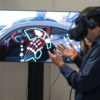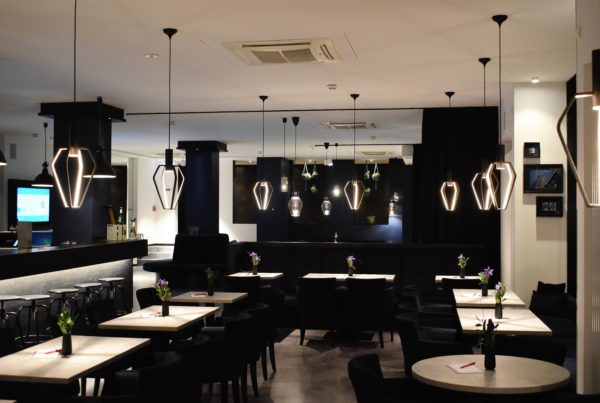Augmented reality may be the future of innovative marketing. With platforms like Facebook becoming oversaturated with ads, it’s becoming clear that brands need to market in fresh, innovative ways to survive and thrive. ‘Alternative’ forms of advertising will become the norm.
Augmented reality (AR) combines digital elements with the physical world. This technology has already been used for decades, and in many fields- healthcare, sports, art, videos games, and more. And with over 85% of midmarket companies already implementing AR in their marketing strategies, it only makes sense for brands to include this technology in advertising campaigns.
Glasses, headsets and other devices may come to mind when you hear the phrase ‘augmented reality.’ These tools can certainly be used in marketing efforts. However, since most of us already have constant access to our phones, it makes sense for marketers to use AR in ways most people can access through mobile devices.
Getting personal
AR is the perfect way to make advertising personal, something that’s so important when telling a brand’s story. Instead of relying on static ads on Facebook or Instagram, AR is a way to make ads interactive— inviting the customer to be a part of the experience rather than a passive audience. Unlike standard ads on TV, social media, or radio, augmented reality isn’t forced on the consumer. They have to take the first step, and once they do, there is meaningful impact.

credit: quotecatalog.com
This technology is becoming so familiar that you may not even realize you’re using it everyday. Snapchat and Instagram filters are one way augmented reality is used everyday, without us giving it a second thought. The ease and prevalence of this application of augmented reality shows how commonplace AR already is.
Attention AND emotion
With so much content on the many screens in front of us daily, advertisers have to be different to stand out. That’s why augmented reality is special. The combination of real-world aspects with technological elements creates a new sensory experience. And along with more senses in the experience, more emotions become involved as well. Emotion is truly the key to ads sticking in consumers’ minds.
This isn’t just speculation. Research shows that augmented reality affects your brain in amazing ways— it’s stored in your memories at a 70% higher rate than standard memories. When you harness that power with the goal of improving brand awareness, you can see how much more effective interactive AR is when compared to static Facebook ads consumers can quickly scroll past. For companies who are ahead of the game, they’re seeing conversion rates anywhere from 20 to 80%, which is a better rate than most ad channels.
 Pokemon Go may be the most successful use of AR in recent years. When kids and adults alike downloaded the app and went outside, they showed how the interactive element makes such a huge difference in consumers’ reactions. Not only did the popularity of the app skyrocket Pokemon’s brand awareness, it was also extremely profitable. In just 20 days, the app brought in $100 million.
Pokemon Go may be the most successful use of AR in recent years. When kids and adults alike downloaded the app and went outside, they showed how the interactive element makes such a huge difference in consumers’ reactions. Not only did the popularity of the app skyrocket Pokemon’s brand awareness, it was also extremely profitable. In just 20 days, the app brought in $100 million.
The power’s in the format.
Being such a new frontier, augmented reality has almost no boundaries or regulations. Leaving the technology up to the creators’ discretion, they have freedom to do what they’d like. The technology has been used for immersive experiences, gaming, interactive billboards, and much more. When creative forces combine with marketing minds, the sky is truly the limit.
 One useful application of augmented reality is “try before you buy.” Instead of consumers having to imagine what a piece of clothing looks like, how a shade of lipstick will look, or what a piece of furniture fits in their space, they can use augmented reality to see it in real time. IKEA launched a clever app that allows shoppers to see what their furniture looks like in their home before making a purchase.
One useful application of augmented reality is “try before you buy.” Instead of consumers having to imagine what a piece of clothing looks like, how a shade of lipstick will look, or what a piece of furniture fits in their space, they can use augmented reality to see it in real time. IKEA launched a clever app that allows shoppers to see what their furniture looks like in their home before making a purchase.
Looking forward
While we don’t see augmented reality becoming the bread and butter of advertising any time soon, we do think it’s a unique way to stand out and push boundaries when marketing. Although it’s sometimes thought of as high-tech and complicated, it’s fairly practical and can be applied in endless creative ways. During this time when many in-person events are being canceled or pushed back, brands can take advantage of the accessibility AR provides. And with so many possibilities, the future use of this technology only depends on the imagination of its creators.








